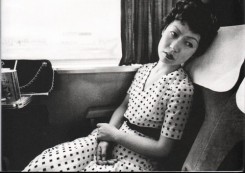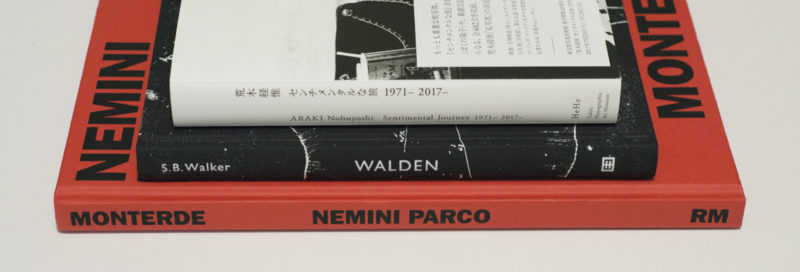Now that another summer has become part of the most recent past, it’s time for regular programming to resume on this site. These past few weeks, I have been very busy with my own photography, which has both allowed and forced me to apply the lessons that most of the time I merely teach others. If there’s one aspect that has made the various (so far quite minor) struggles a bit easier it’s the realization that at the end of the day, it’s just pictures. Yes, it’s really just pictures — you can take them out of an edit (or add them back in), but it’s just pictures. Photographers often discuss and treat their pictures as if they were these grandiose entities, which very rarely they can indeed be, albeit for very short periods of time. But they’re just pictures, and I wish we could all realize that: it might help us break through the often very orthodox and narrow-minded conservatism that pervades such large parts of photoland. But onto other people’s pictures and what they have made with them in the form of books.

Whatever you can or want to say about Nobuyoshi Araki (and there is a lot I could easily think of), his Sentimental Journey is sui generis. The work ought to be the starting point for any serious engagement with the artist. For those who are not overly familiar with Sentimental Journey, things can be a bit confusing because there is the original book (recently reissued), and there are various add-ons or follow-ups. Thankfully, there now exists Sentimental Journey 1971 – 2017 – (yes, that is the title with that added “-” at the end), which chronicles the full time span of the photographer’s relationship with his wife Yoko, far beyond her death in 1990.
It is in this work that Araki has allowed himself to be at his most vulnerable, a vulnerability that to some extent blunted many of his impulses, which especially after 1990 have taken his work to often rather unseemly extremes. As Michiko Kasahara, chief curator of the Tokyo Photographic Art Museum, notes in an essay at the end of the book “when it comes to Araki’s depiction of ‘women,’ he clearly displays a clearly sexual discriminative, misogynistic, viewpoint that is typical of Japanese men of over [sic] a certain age. […] For better or worse, we are able to glimpse the Showa-period male’s concept of women and view on life and death running throughout Araki’s body of work.” (We might note that outside of Japan, the situation is hardly any different, and it’s not even necessarily tied to age.) In general, the essays in the book are a welcome addition, for the most part helping the viewer to understand the man and his work better. Apart from two curators, there also are various photographers reflecting on a single picture from the series that they picked.
The depiction of a photographer’s partner forms a well established part of photography’s history. To be honest, in most cases I couldn’t care less about the work. It’s true, every practitioner managed to produce maybe one or two, occasionally maybe even a handful of good pictures. But all too often, I’m left with the feeling that the partner stood (or stands in) more for that convenient photography object (yes, I’m using this word on purpose) than for an actual, real partner. What makes Sentimental Journey interesting for me is that this is true for Araki as well, but somehow what I am made to feel is a lot more poignant than when I look at, say, … Oh, just add any of your usual (male) suspects here.
In particular the section in the book covering Yoko’s death is profoundly heart breaking. It’s true, they’re just pictures. But for me, as the viewer, they speak of something that for the maker, Araki, they cannot possibly have expressed enough. Now that really is photography.
(not rated)

More than any other Western nation, the United States sustains itself through a series of myths that are sharply at odds with its actual, lived reality. The Trump presidency, which openly advocates and rests on white supremacy, has thrown some of these myths into sharp relief. Needless to say, many myths are fairly benign and don’t necessarily carry explosive potential of any kind. A good example is provided by Walden Pond and its environs, made famous by Henry David Thoreau’s text.
In actuality, we’re talking about two places here. There’s the geographical one, near Concord (Massachusetts), just outside of Boston, and there’s the mental one, the one described and conveyed through Thoreau’s writing and through everything that with time has been layered upon it. In a most obvious sense, if you were to drive to Walden Pond, you would be very unlikely to encounter the latter, in part because it has become more a myth than a useful guide for how to approach the actual location.
Photographers tend to struggle with ideas of place, because often, they cannot separate physical from mental spaces. In particular, mental spaces tend not to show up once physical spaces are photographed. If they did show up, photography would be an awfully boring and tedious medium: It’s in the gap between what one wants to see and what one is able to photographically describe that art is being made (to be clear, photographers’ struggle typically centers on accepting this basic fact).
S.B. Walker‘s Walden presents photographs taken around, well, the actual location. I can’t help but think that in the end, these fine pictures will get weighed down by expectations they cannot possibly fulfill. To begin with, though, I will have to acknowledge my being an outsider, given I didn’t grow up in the US. Walden is just another one of those somewhat strange myths that I have come to learn about. So for me, these pictures really are just that, pictures. And I’m thinking that maybe it’s because I don’t have this cultural baggage that I can enjoy them in a way that might be inaccessible to people who grew up with the myth.
Mixing landscapes with portraits, Walden describes what looks like a quintessentially New England environment. The landscape photographs for the most part are good, even though I feel they were made to express something they can’t (see the above). They feel a little strained; I can sense the maker’s desire for them to be poignant in them. I’m a lot more interested in the portraits. To be more precise there are photographs of people that were taken with a very resolved and clear interaction between the subjects and the photographer. And there are pictures of people that look like the photographer stumbled on some scene. I originally was going to prefer the former over the latter, but I realize that doesn’t work, because there are very good pictures in each set.
In these portraits, I feel I am brought to encounter another person, or maybe a group of them, going about whatever business they’re going about, but clearly being present at this particular location for a particular reason (which thankfully might or might not have anything to do with Thoreau). You could say that for portraits taken at any location, of course, but something is happening here, in these pictures, that has me interested in these people, at least some of them. Here, I feel the photographer’s opinion. Here, the photographer manages to bring the place and its myth closest together.
Walden; photographs by S.B. Walker; text by Alan Trachtenberg; Kehrer; 2016
Rating: Photography 3.5, Book Concept 3.0, Edit 2.0, Production 4.0 – Overall 3.3

If Walden is mostly quiet and cerebral, Nemini Parco by Jesús Monterde is anything but. It’s deeply visceral, at times violent. It is, in effect, a book about the sheer brutishness of life, and of life’s inevitable conclusion, death.
While I don’t necessarily enjoy seeing the few images of slaughtered animals, the book is something that I realized I was craving. These days, contemporary photography all too often is so polite, so cerebral, so toothless, so, let’s face it, just goddamn boring with its safe “explorations” or “investigations” of topics we all agree on anyway. What excites me about Nemini Parco is not just that it clearly breaks out of photoland’s beloved safe havens, it also does it so effortlessly, while, at the same time, avoiding mere shock (or presumed shock) value (think Bruce Gilden or Antoine D’Agata). While everything is described in pretty much the same manner — narrow crops filled in with harsh flash, this description still allows the photographer to cover a range of emotional qualities, including even moments of tenderness that are then ripped apart by horror (or the other way around).
So the book might be visceral, but it allows the viewer to explore more than s/he might imagine at first. Life and death are big themes, and some of its aspects might be fairly grim and shocking to witness. At the same time, there is beauty to be found in the most unlikely places, and it’s the book’s insistence on that beauty that ultimately makes it such a gratifying piece of art.
Clearly one of the best books I’ve seen in quite some time.
Nemini Parco; photographs by Jesús Monterde; text by Alfonso Boix; RM; 2017
Rating: Photography 5.0, Book Concept 4.0, Edit 3.0, Production 4.5 – Overall 4.3
Ratings explained here.
